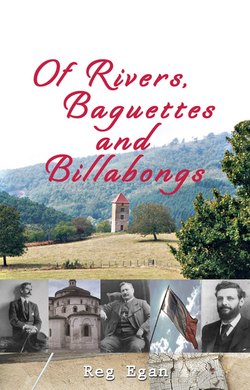Читать книгу Of Rivers, Baguettes and Billabongs - Reg Egan - Страница 13
На сайте Литреса книга снята с продажи.
ОглавлениеCHAPTER SIX
Last night after our entrée and main course, we were allowed, or cunningly manoeuvred, to linger over the remaining third of the wine bottle. A cheese trolley was then wheeled alongside the table with knives, forks and plates, and naturally a basket of fresh and warm, sliced baguette.
“Five cheeses, cheeses of the Auvergne, local…” She picked up her knife and fork and leant towards our table looking from one diner to the other.
“This,” she said, “is the Cantal — very popular throughout France now and very ancient. I think it was mentioned by Pliny the Elder in the first century BC.” I nodded, and she skilfully cut a slice and put it on my plate.
Cantal is from the milk of the beautiful Salers cows. It is pressed twice — once when the curd is broken up and salted and the second time when it is pressed into its final mold. You can buy it young, jeune when it is at least thirty days old, medium or entre dou, when it is between two and six months in age, and vieux, when it is more than six months old. As in so many instances vieux is…best. Cantal cheese comes from what in the Auvergne is known as the Pay Vert.
Saint Nectaire comes from the high country around this little town, the communes of the Puy-de-Dôme (of the famous views), and from specified areas in the Cantal. It has been around since before Louis X1V. It is creamy, firm but springy in the mouth, and has perhaps a suggestion of mould, and it has a certain fame. Yes, we would have a slice, or tranche.
Bleu d’Auvergne is, of course, a blue cheese, again from cow’s milk and is very similar to Fourme d’Ambert. Its area of production is extensive and takes in part of the Lozere and even the Lot. And it is delicious. Another slice? Oui, merci.
The final cheese that I was tempted to take was from a farmer or fermier from the distant town of Saint-Jean-de-Chapteuil, the home of that Jules Romain fellow. And in addition that cheese was from goat’s milk, a change from the cow’s milk cheeses, splendid though they are. The cheese is dry, soft and full of flavour.
What a way to finish the last of the bottle, and what an excuse.
There is an excellent little book French Cheeses written by (yes, it’s true) Kazuko Masui and Tomoko Yamuda and they attempt the well nigh impossible and advise you on what wine goes with which cheese. The practical answer often is that you are simply tempted to have cheese to enable you to finish the wine that remains after the conclusion of the main course. Their advice, though, is good. They admit that there “are no hard and fast rules”, and suggest trial and experimentation.
Cheese has been made for the last five thousand years at least. Certainly there appears to be evidence of cheesemaking equipment in Europe and Egypt for that period. And Homer (9th or 8th century B.C.) in the Odyssey gives an excellent description of cheesemaking from goat’s and ewe’s milk and storage of the product in baskets in caves. Was it by any chance a blue cheese? Virgil in 52 BC also writes about cheese.
Our Japanese authors reflect on the origin of the “Holy Trinity” of wine, cheese and bread, and suggest that the fifteenth century monk and writer Rabelais may have coined the phrase. I find that his Holy Trinity is much easier to understand than the ecclesiastical one. Cheese, bread and wine — beautiful. I must ask my heart man if the Trinity raises or lowers cholesterol. In this respect I note with pleasure that the very delicious Italian cheeses, Parmesan, Parmigiano Reggiano and Grana are made from “partially skimmed” milk. Away with thee, cholesterol.
